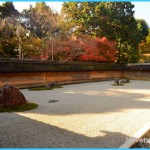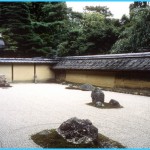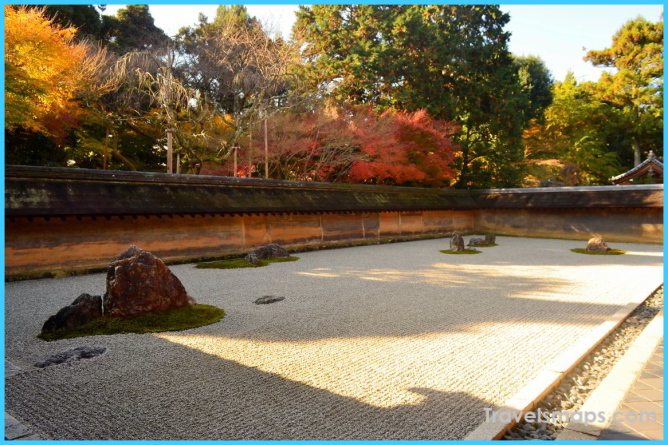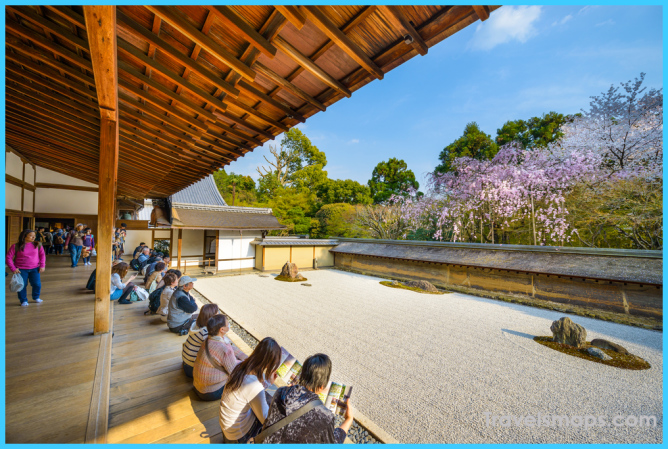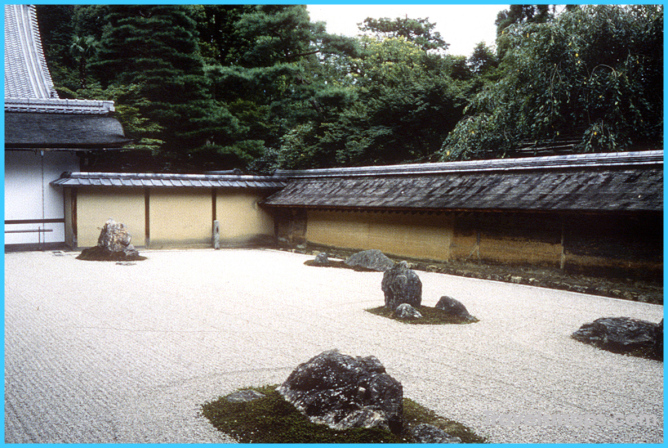The rock garden at Ryoan-ji Temple is arguably the most famous Zen garden in the world. An 82 ft (25 m) by 33 ft (10 m) rectangular walled enclosure in front of the Abbot’s Hall, Ryoan-ji’s garden contains fifteen stones set in silvery-white Shirakawa gravel, kept carefully raked by acolyte monks. The richly patterned earthen wall, made of clay boiled in oil and topped with cypress bark and ceramic tile, serves to pictorially frame the abstract arrangement of garden elements. The immutably simple garden, a Zen enigma, is viewed from an unpainted, unadorned wooden veranda. Frequently returning to Ryoan-ji during his lifetime, essayist Donald Richie admired the garden’s humble nature and continuity, “Hidden away in a corner of a temple off in the suburbs of a city, it has the value of a whisper in a world of shouts.” Now a World Heritage Site, Ryoan-ji began as a Zen training temple in 1450, located on a country estate in the foothills of Kyoto’s northern Kitayama Mountains. The temple grounds also include spacious strolling gardens conducive to quiet ruminations around Kyoyochi Pond, where a simple arched stone bridge leads to a small shrine on Bentenjima Islet. The spring-fed pond, centuries older than the renowned Zen rock garden, reflects the changing seasons of the wooded shore and surrounding hills on its placid surface, the ephemeral compositions dissolving and reforming with the slightest breeze.
Ryoan-ji Temple in Kyoto Photo Gallery
Raking the garden without leaving a trace is a Zen koan all its own.
Savoring the garden’s morning calm.
An arched stone bridge leads to a small shrine on Bentenjima Islet in Kyoyochi Pond.
A succession of fusuma sliding partition ink paintings is the only decorative feature inside the Hojo Hall. Morning sun-light casts a monk’s shadow on the garden wall, an aesthetic boundary built of clay boiled in oil.
Maybe You Like Them Too
- The Best Places To Visit In North America For Christmas
- Faro Travel Guide: Map of Faro
- Mumbai Travel Guide For Tourists: Map Of Mumbai
- Travel to Budapest
- Thailand Travel Guide for Tourists: The Ultimate Thailand Map

